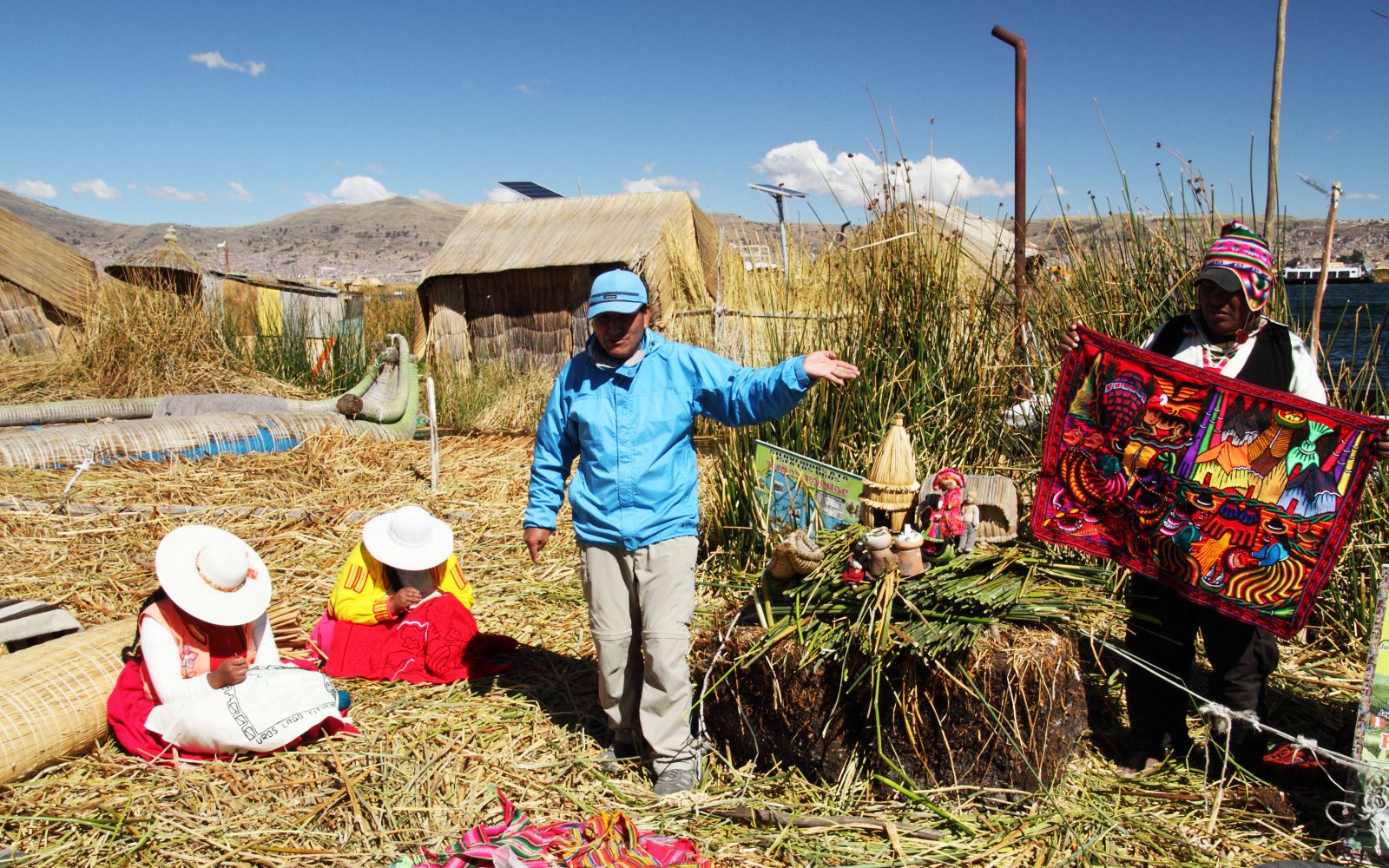

The Uru people have been living on floating islands on Lake Titicaca for thousands of years. Totora reed growing near the lake shore has been and is still used extensively for building the islands, houses, and even boats. The strategy of living on the lake originally served the purpose to better escape invaders. All structures made out of reed have to be maintained or even renewed at short intervals (often every year). After a strong El Niño event in 1986 had caused severe damage to the islands, they were rebuilt closer to the lake shore near Puno. Today, international tourism serves as an important source of income for the Uru people, enabling them to modernize their lives and to send their children to universities on the mainland. However, in contrast to the islands of Amantaní and Taquile where tourism is fully community-based, the floating islands rather appear to experience the phenomenon of mass tourism.

Some impressions of the floating islands


Explore the floating islands by clicking on one of the arrows or in the image.
These photographs help you to better imagine the daily life of the Uru people. Note that almost everything is made of reed. The very particular lifestyle here is merchandized quite well to the international tourists visiting the area.
Could you imagine to live on the Floating Islands of the Uru? What would you like, what would you dislike? Write a short story about an average day on the floating islands.













